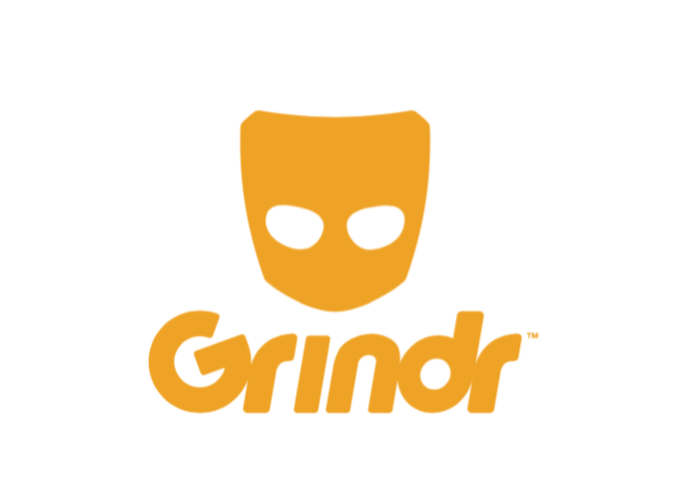
In case you missed it, there’s an app that people can use to meet up and have gay sex! (Google docs tried to autocomplete that sentence to “meet up and have a conversation” — slow down, Google: That’s third base in Grindr speak.) I joined about a month ago, but worry not, because I haven’t “given in” to the more toxic sides of the app. On the contrary, the experience has provided me the opportunity to practice an established research method: ethnography — specifically, an ethnography of Grindr that you never wanted, and never asked for, but that I hope you won’t regret giving web traffic.
Wait, what?
The Cambridge Encyclopedia of Anthropology provides the following definition of ethnography: “the recording and analysis of a culture or society, usually based on participant-observation and resulting in a written account of a people, place or institution.” The goal is ethnographic immersion among the research participants, bringing certain attunements for later analysis. Ethnography has been loftily described as the iterative process of getting lost and finding oneself again, and the written product that emerges. This description raises questions about objectivity and the identity of the ethnographer, which we’ll get into later. In this case, the ethnographer will be (to quote Taylor Swift) “ME-e-e!”
Traditionally, ethnography was defined by the “us versus them” dialectic, meaning someone with training in the Western academy would go to a far-away place to marvel at the foreigners’ oh-so-different lives. Only recently has the academy realized that Western contexts are bizarre, and worthy of ethnography. Make no mistake: I’m not some specialized “us” making sense of the gay “them.” Rather, I’m in the thick of things myself, and decided to call myself an ethnographer after the fact, for my own sanity and as clickbait. (Things are pretty thick over here, but I haven’t dislocated my jaw yet.) Enjoy!
Opening the app
For more context — Grindr is a queer social networking app that launched in 2009. The cultural script for using it in a positive and healthy way, however, is still in beta, as you tech geeks would say.
It might be helpful to start with something that my friends in Symbolic Systems pointed out: The Grindr user interface is terrible — clunky, glitchy, battery-draining. Maybe that’s what we deserve for the unspeakable acts that the app facilitates? If we’re going to commodify physical intimacy, maybe we shouldn’t glorify it with cute graphics and intuitive design. But, unlike SymSys majors, not all of us get horned up when we see a good user interface. If anything, the terrible experience is even more incentive to get off the app as quickly as possible — either to go meet someone and get railed, or to put your phone away and wallow in self-loathing.
Once you’re using the app, it’s the Wild West. No swiping, no matching, no endless feed; instead, the app goes, *boom* — here are all the gay people in your area, so take it or leave it. Or, here are all the gay torsos in your area — if the profile has any photos at all. To show interest in a particularly scrumptious torso, you can “tap” or message its owner. You can even send pictures to any user who appears in your grid — and that’s exactly what you think it’s like. You can also change the age listed on your profile at any time, or list no age at all. And unless the user opts out, you can see how many feet away they are from your location, because I guess we’re still using the Imperial System.
If you use Grindr, maybe you’re turned on by now? If you’re literally anyone else, you probably feel like taking a shower.
Anonymity is the running theme of Grindr. When I first made my profile, only a naive young gay one month ago, I included my first name because I wasn’t worried about being outed by randos on the Internet. (Now that you’re reading this article, I guess that ship has sailed anyway.) Yet when confronted with the sea of profiles without names, including those of people I recognized, I felt pressured into removing my own. Also, I thought it would be best to respect the conventions of my research participants. But I left my first initial, a small vestige of my personhood to mark the walking meat-sack that I hath become in the eyes of my gay peers!
Still, the user will often name their profile with something. Often they express their identity with a single emoji, either quirky (peace sign) or suggestive (peach). Sometimes, they name their purpose for being on the app — and the mix of purposes is striking. For example, the profile of “Hung4now” might appear next to the profile of “cuddles?” which might appear next to “Thesis advisors?” Reading these nearly gave me whiplash!
Also, let’s take a moment. This man felt the need to clarify that his penis hangs, but I’m not sure there are many other configurations, unless it “floats” or “wanders.” And if the penis hangs, does it ever “vibe” or “chill,” too? On the other hand, I like the ephemerality of “Hung4now,” as it acknowledges that hanging later is no guarantee.
Next, cuddles are a reasonable ask. But if you are looking for a thesis advisor on Grindr, then I hate to break it to you: Your department has failed you. How many alternatives did you exhaust before things reached this point? Or, if you’re looking for a thesis advisor role-play situation, then I’m not here to kink-shame, but I do believe this kink could use some workshopping. If you set up a Zoom meeting with your department’s Student Services Officer to ask about thesis advising, you might find that the fantasy is broken — the whole process is rather unsexy.
In summary, expect to see torsos from any which angle on Grindr, but don’t expect to learn names. If having a conversation is “third base,” then perhaps learning someone’s real name is second base? Actually, I take that back: The “bases” analogy might not work for gay people, because we don’t know anything about sports.
A note on methodology
To be clear, Grindr users have a range of identities, including many who are not mostly male-identifying and gay or bi. And while it’s fun to throw around the idea of gay sex, the app also has many recognized purposes other than hook-ups. With this in mind, I won’t ground my findings in anyone’s positionality but my own: a cis, gay man who recently became un-scared of sex and now has to deal with other men. (Though being a “man,” giggle, won’t stop me from having soft hands and doing Kegels.) Likewise, don’t expect to find identifying information about anyone but myself.
But more deeply, this project is mostly an excuse to talk about myself. Then why call it an “ethnography of Grindr”? I consider Grindr an interface between the internal and external, a touchpoint between myself and the queer male community. In one direction, using Grindr allows me to connect my experience to a larger pattern. In the other, it allows me to try to see myself in the Grindr fishbowl from the outside — hence, saving my sanity.
Further, I suggest that ethnography done well should in part be auto-ethnographic. By questioning and observing, we actively create our objects of study. There is no mind-independent “queer male community” out there, waiting to be accessed from my limited perspective, but rather something that I play a role in creating through my actions around it. Thus, it would be irresponsible to erase myself from the process, speaking as if from “everywhere and nowhere” in the name of objectivity. Instead, transparency is the name of the gayme. My positionality will shape any findings I present — rather than trying to hide it, I may as well openly explore what it might reveal.
I can think of a few more reasons for calling this an ethnography of Grindr. For one, even while the very existence of Grindr is subversive in a heteronormative society, using it for my own purposes serves as my small resistance to the toxicity that it perpetuates. Also, the pun opportunity of writing about Grindr for The Grind was too good to pass up — I check both “on the daily.” If I hypothetically worked hard on this article while manually crushing pepper onto my meal, would that make me a person “on Grindr, grinding while grinding for The Grind”?
But mostly, I’ve spent the last several months navel-gazing while my brain slowly turned into scrambled eggs, so it would be nice to know that something coherent came out of it. Grindr was the culmination and the start of more reflection, sometimes at the expense of my other responsibilities. In any case, buckle your seatbelts, friends, because we’re about to thrust forward, at full-throttle, into some very gay thoughts about this very gay life!
This article is part of a series on sex, love and relationships in the digital age and during the pandemic.
Contact The Daily’s The Grind section at thegrind ‘at’ stanforddaily.com.







